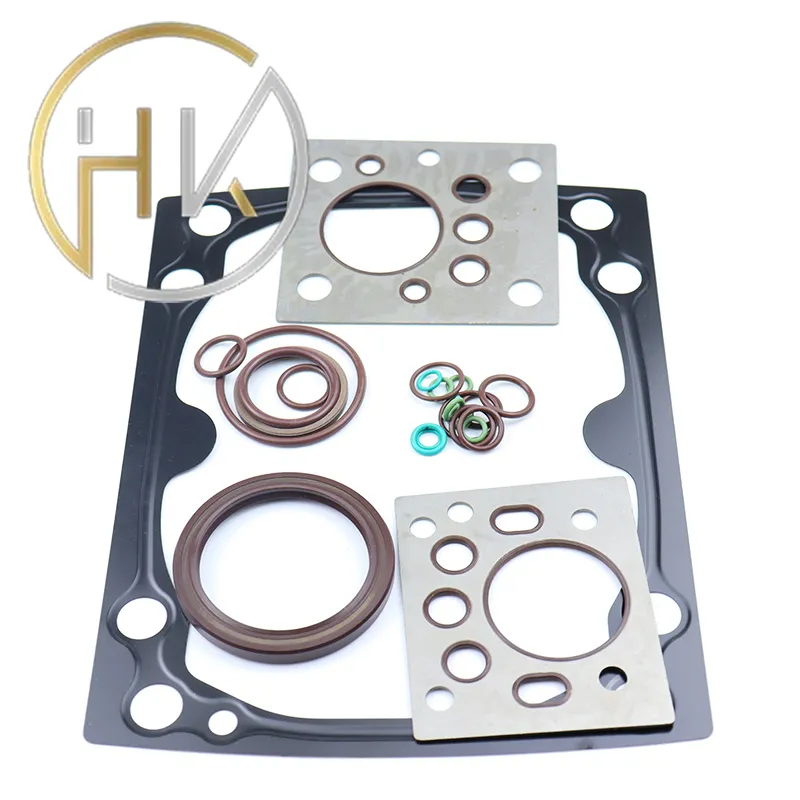okt. . 20, 2024 20:37 Back to list
Rear Hub Oil Seal Maintenance and Replacement Guide for Optimal Performance
Understanding the Importance of Rear Hub Oil Seals in Vehicles
Rear hub oil seals play a crucial role in the overall performance and longevity of a vehicle's drivetrain system. These seals, located at the wheel hub, are responsible for preventing the leakage of lubricating oil from the rear axle, ensuring smooth operation and protecting internal components from dirt and debris. In this article, we will explore the function, construction, and maintenance practices for rear hub oil seals, as well as the consequences of neglecting them.
Function of Rear Hub Oil Seals
The primary function of rear hub oil seals is to maintain the integrity of the lubricant within the wheel hub. Lubricating oil is essential for reducing friction between moving parts, such as bearings and gears. Without adequate lubrication, these components can wear down rapidly, leading to increased heat generation and ultimately catastrophic failure. The oil seal prevents contaminants like dirt, water, and road grime from entering the hub assembly, which could compromise the lubrication and lead to premature wear.
Furthermore, a well-functioning oil seal contributes to the proper pressure within the hub
. This pressure is critical for the effective operation of the wheel bearings and ensures that they remain properly lubricated during vehicle operation. By sealing off the oil, the rear hub oil seal maintains optimal conditions for the wheel hub assembly, enhancing performance and safety.Construction of Rear Hub Oil Seals
Rear hub oil seals are typically made from durable materials such as rubber or synthetic compounds that can withstand high temperatures and resist wear. The design of these seals often incorporates a lip or a series of lips that create a tight seal against the rotating shaft of the hub. This contact surface is essential for preventing oil leaks while allowing for the necessary movement.
In addition to the sealing lip, some oil seals feature a spring (a garter spring) that enhances the contact pressure between the seal and the shaft, further improving their effectiveness in preventing leaks. The outer diameter of the seal is designed to fit snugly within the hub assembly, ensuring a proper fit and sealing mechanism.
rear hub oil seal

Maintenance and Inspection
Regular maintenance and inspection of rear hub oil seals are vital for maintaining vehicle performance. Signs of a failing oil seal may include visible oil leaks around the wheel hub, unusual noises from the bearings, or excessive heat during operation. If any of these symptoms are noted, it is advisable to inspect the seal and the surrounding components promptly.
During routine maintenance, mechanics should check the condition of the oil seal, looking for cracks, wear, or deformation. If any damage is observed, it is crucial to replace the seal immediately to prevent further issues. Additionally, when replacing wheel bearings or performing any work on the axle, it is a good practice to replace the oil seals, as they are often subjected to wear throughout the lifespan of the vehicle.
Consequences of Neglecting Oil Seals
Neglecting rear hub oil seals can lead to severe consequences for both the vehicle and the driver. A leaking oil seal can allow lubricating oil to escape, resulting in insufficient lubrication for the bearings. This can cause overheating, increased friction, and ultimately bearing failure. Replacing bearings can be an expensive and time-consuming process, making it all the more important to monitor the condition of oil seals regularly.
Moreover, a compromised seal can allow dirt and moisture to enter the hub, contributing to corrosion and pitting of internal components. These issues not only affect performance but can also lead to safety hazards, as compromised wheel bearings can result in unexpected wheel failure, loss of control, or accidents.
Conclusion
In summary, the rear hub oil seal is a vital component that contributes to the safe and efficient operation of a vehicle's drivetrain. Proper maintenance, timely inspection, and immediate replacement of damaged seals are essential practices for vehicle owners. By understanding the significance of these seals and addressing potential issues proactively, drivers can ensure their vehicles continue to perform optimally and safely on the road. Remember, a small part like the rear hub oil seal can have a big impact on vehicle reliability and performance.
-
The Trans-formative Journey of Wheel Hub Oil Seals
NewsJun.06,2025
-
Graphene-Enhanced Oil Seals: Revolutionizing High-Pressure Oil Sealing
NewsJun.06,2025
-
Future of Hydraulic Sealing: Advanced Intelligent TCN Oil Seals
NewsJun.06,2025
-
Don’t Let a Broken TCV Oil Seal Ruin Your Day
NewsJun.06,2025
-
Bio-Inspired Dust Seals for Better Sealing Performance
NewsJun.06,2025
-
Biodegradable and Sustainable Hydraulic Seal Materials
NewsJun.06,2025
-
Top Oil Seal Solutions for Your Industrial Needs
NewsMay.22,2025
Products categories
















